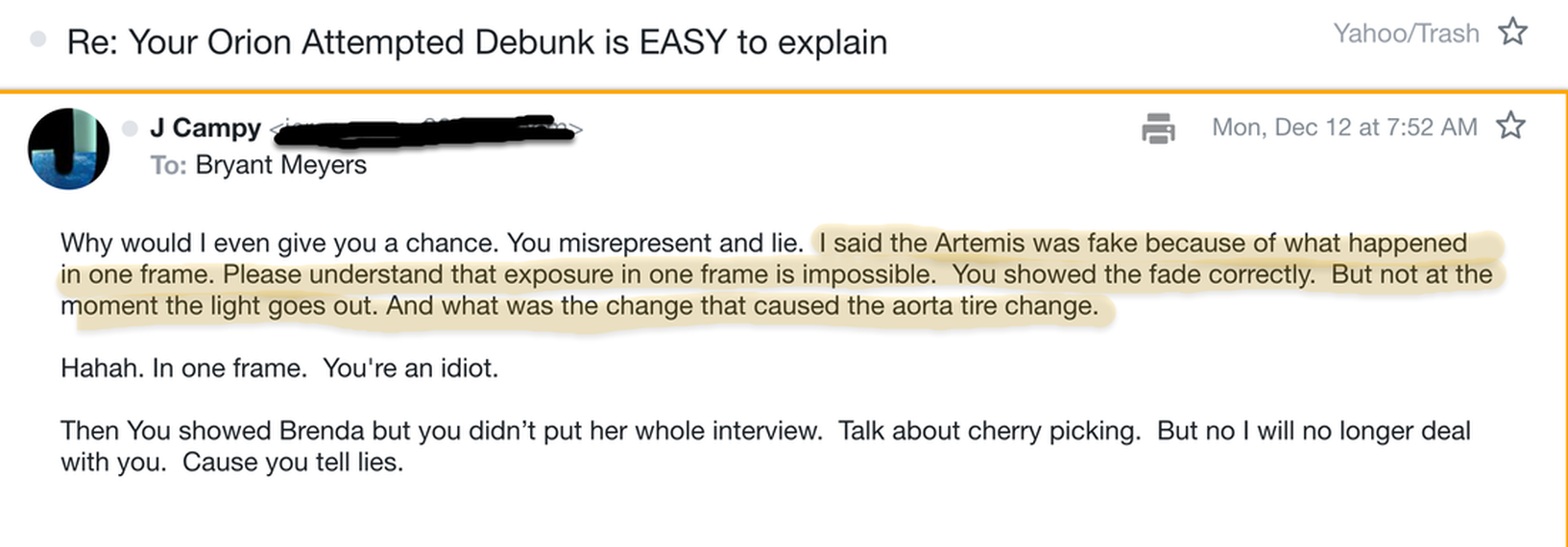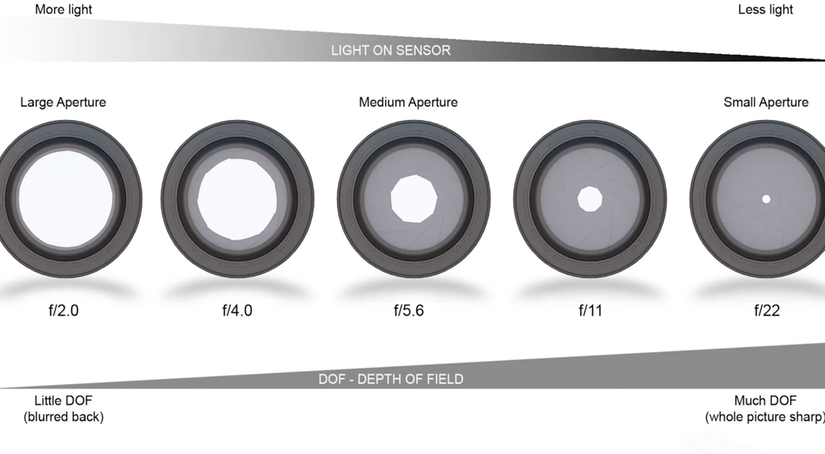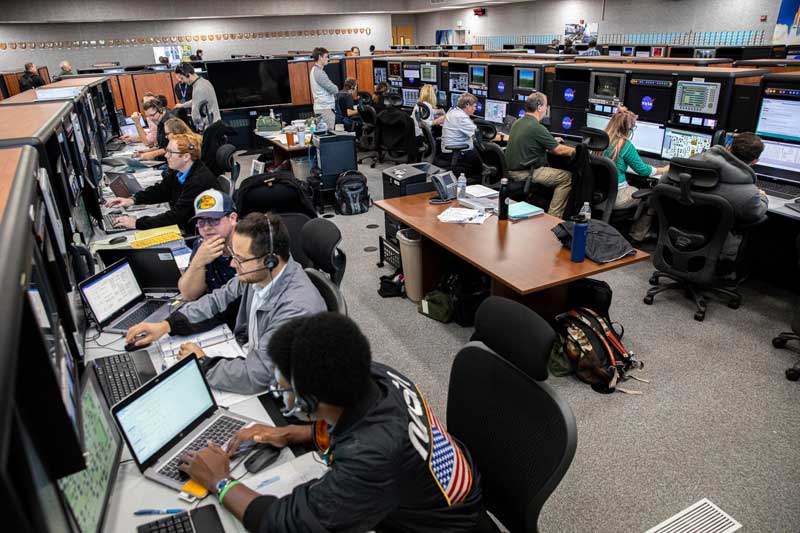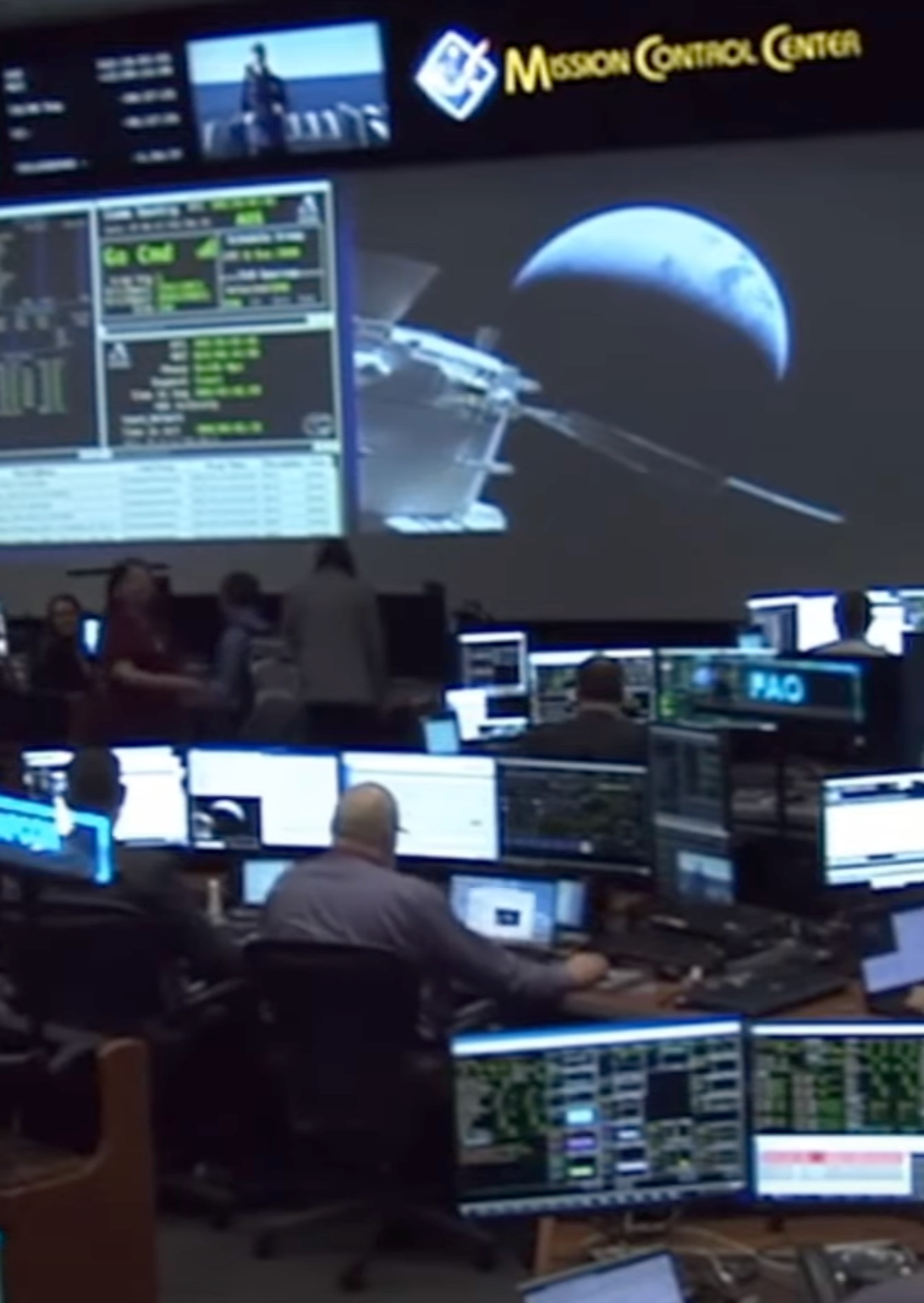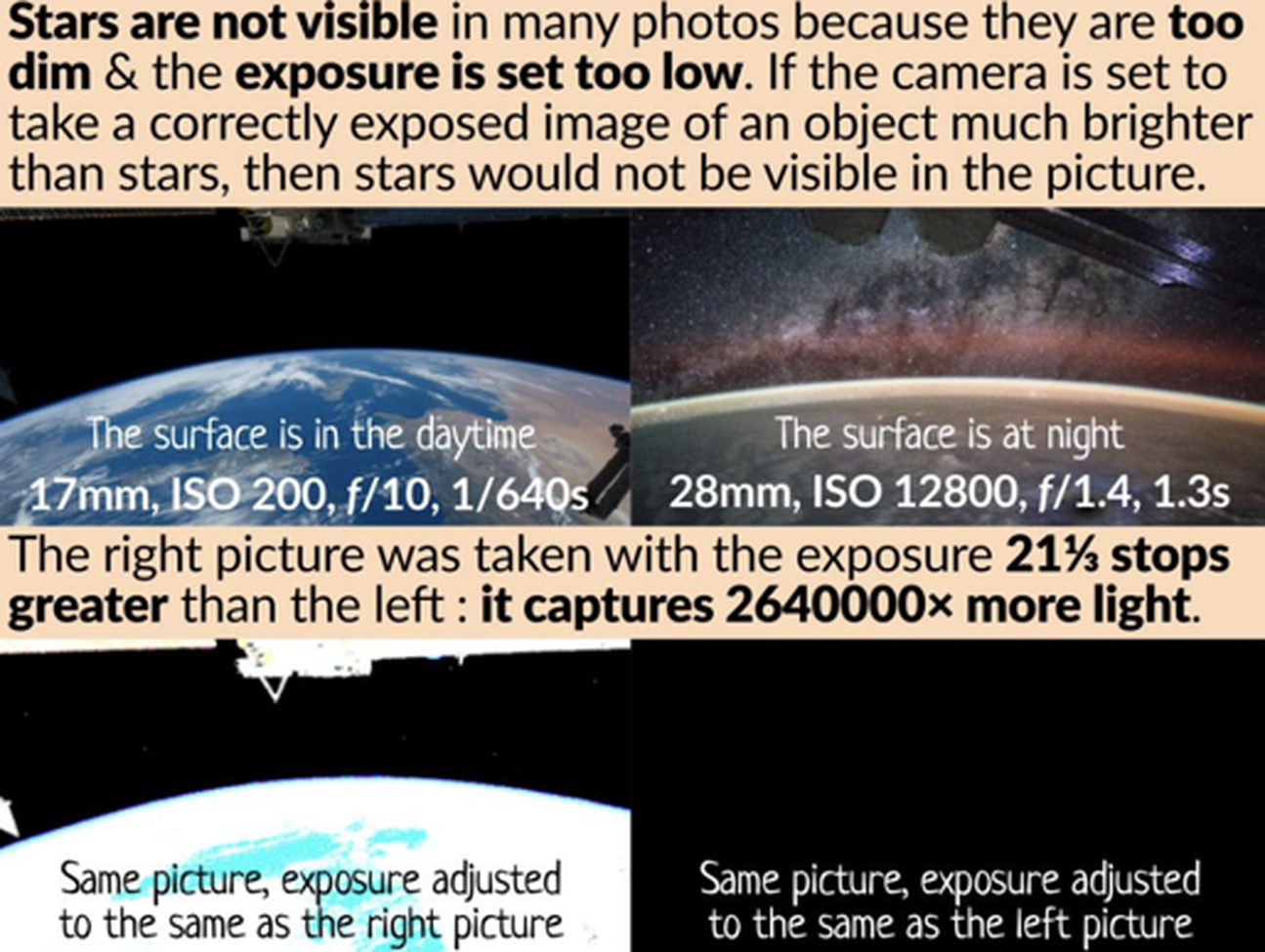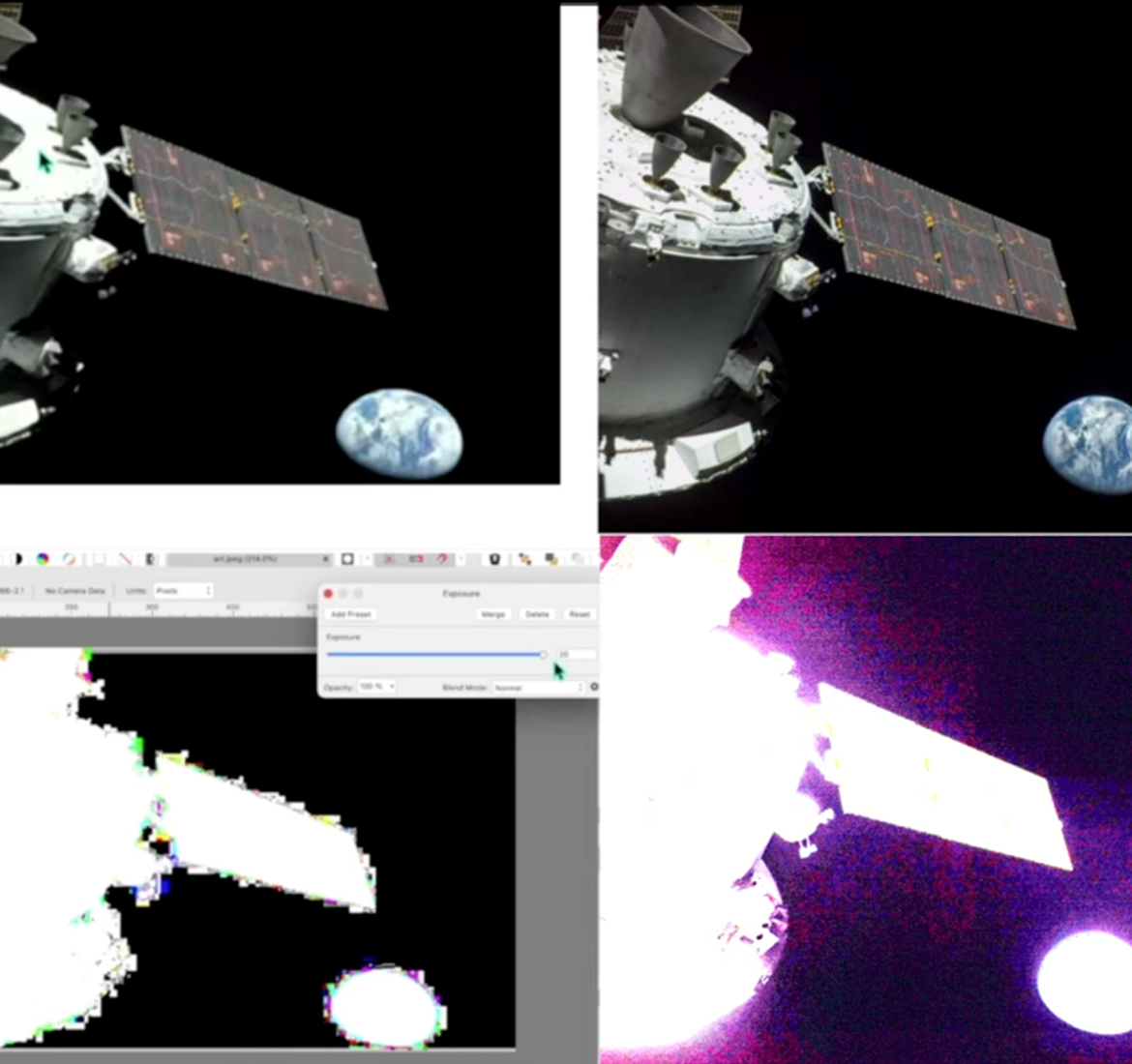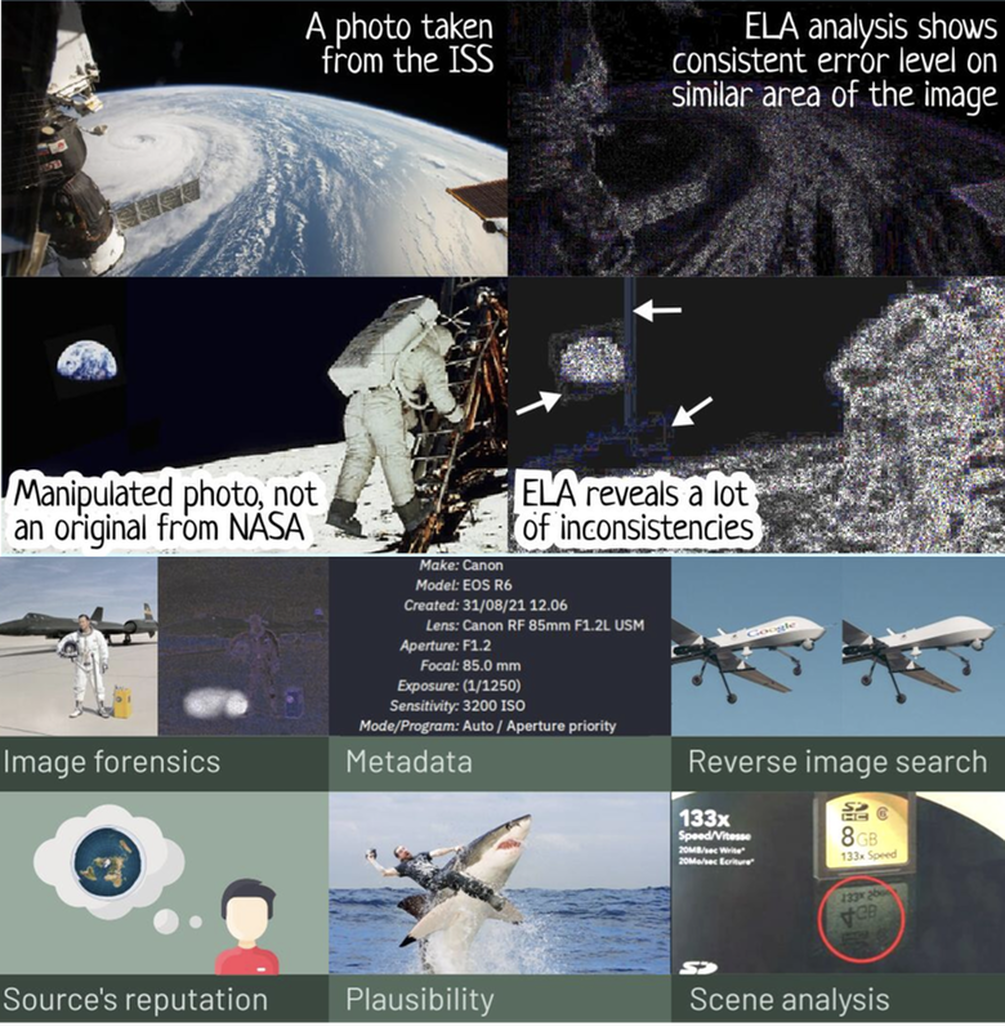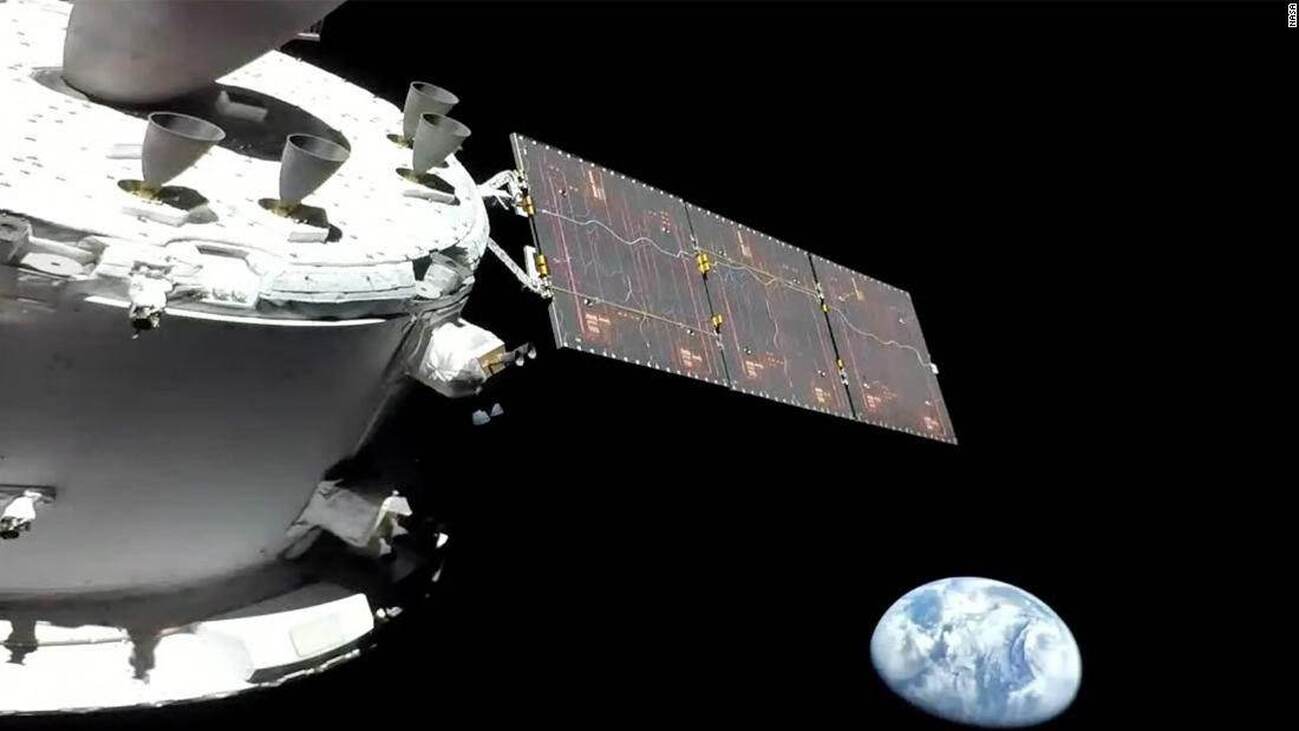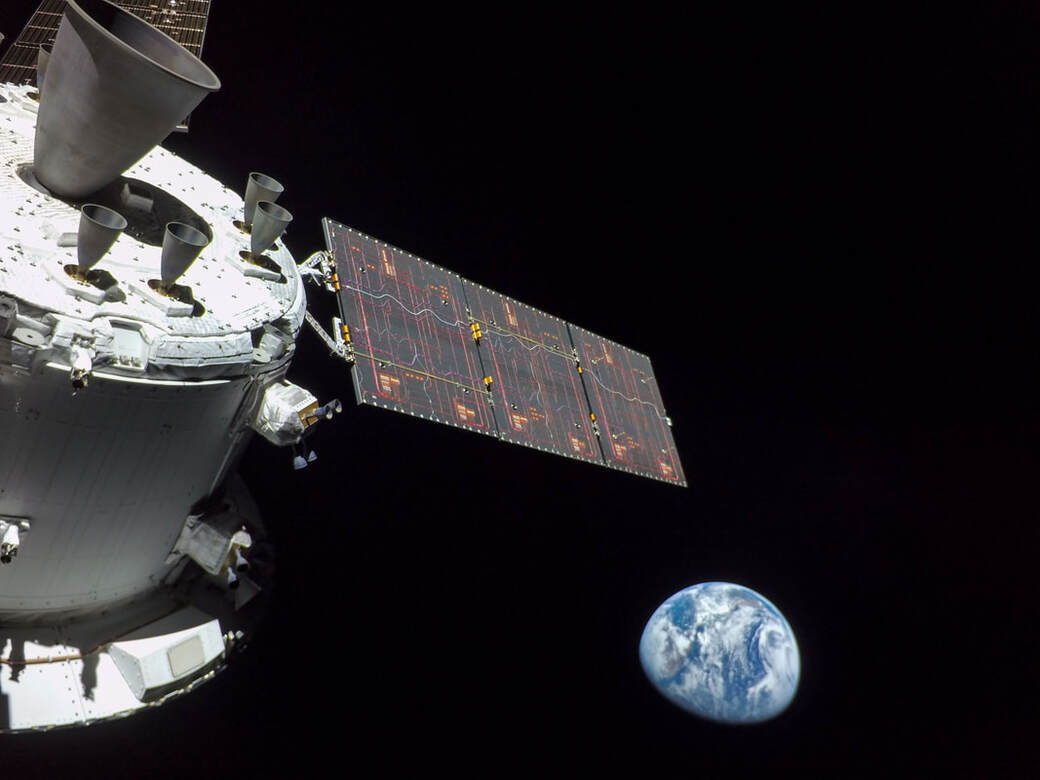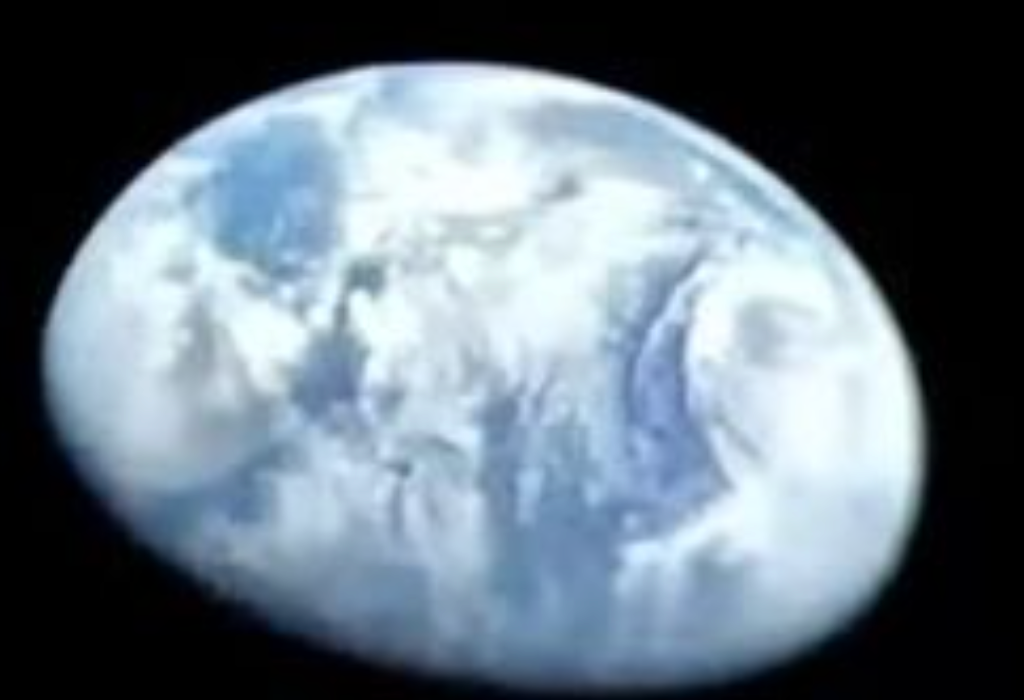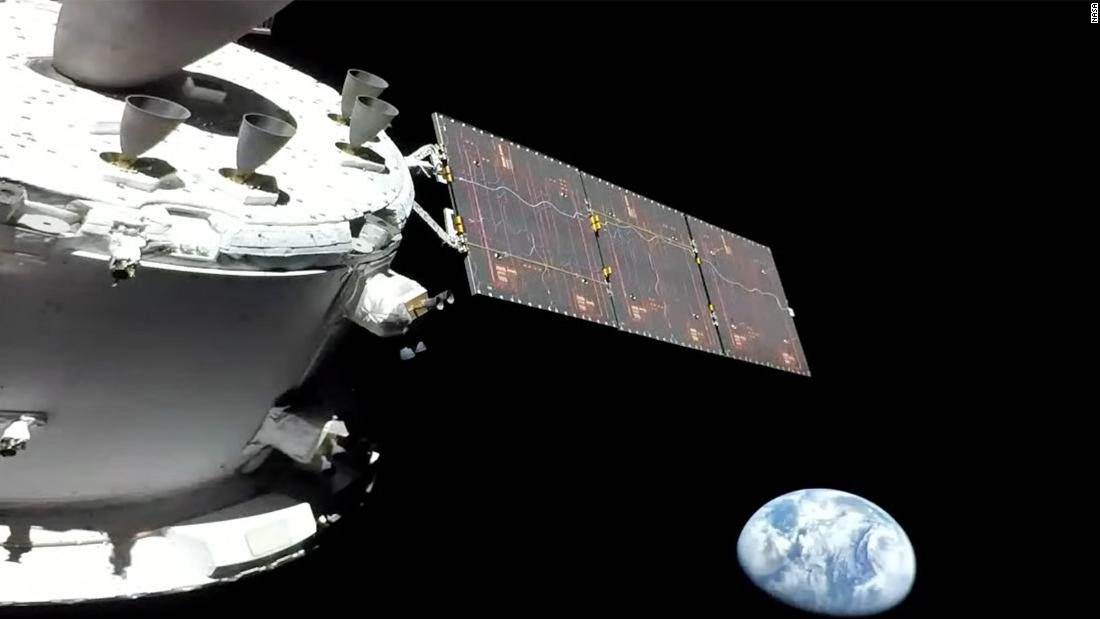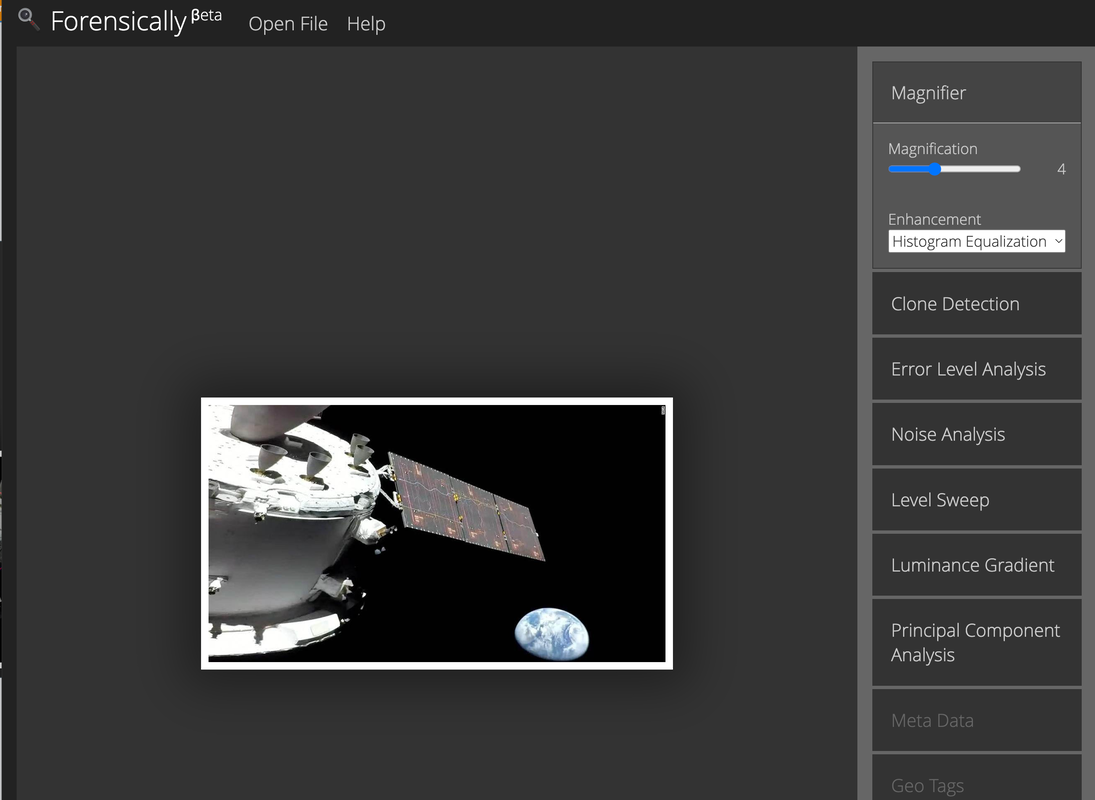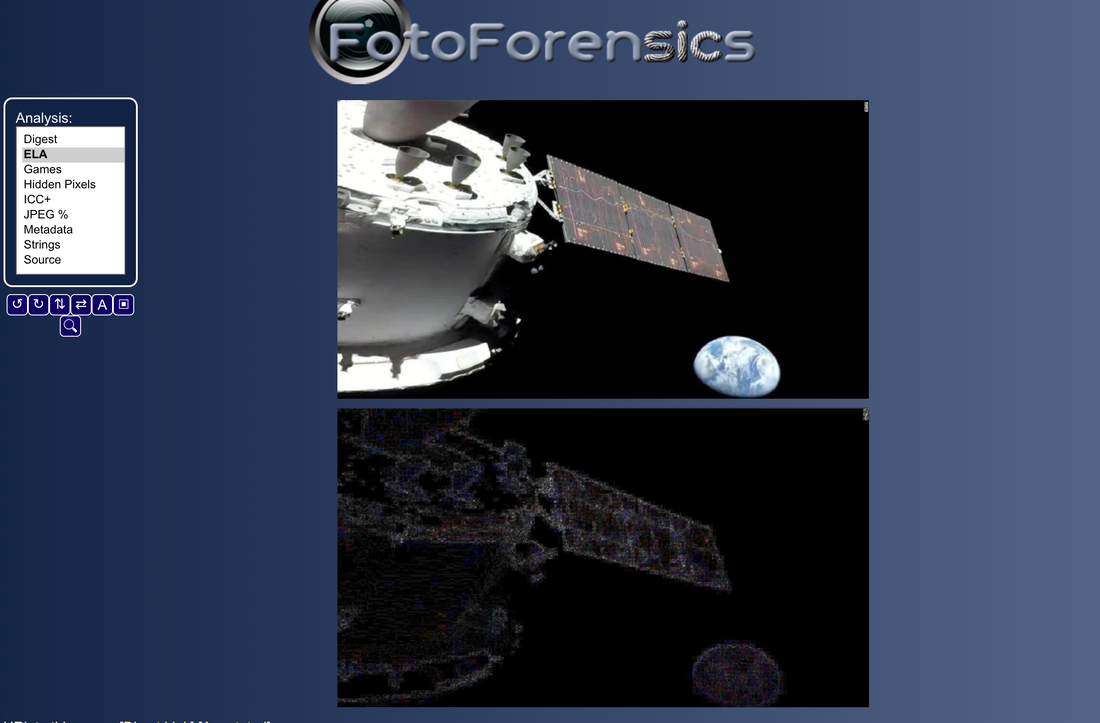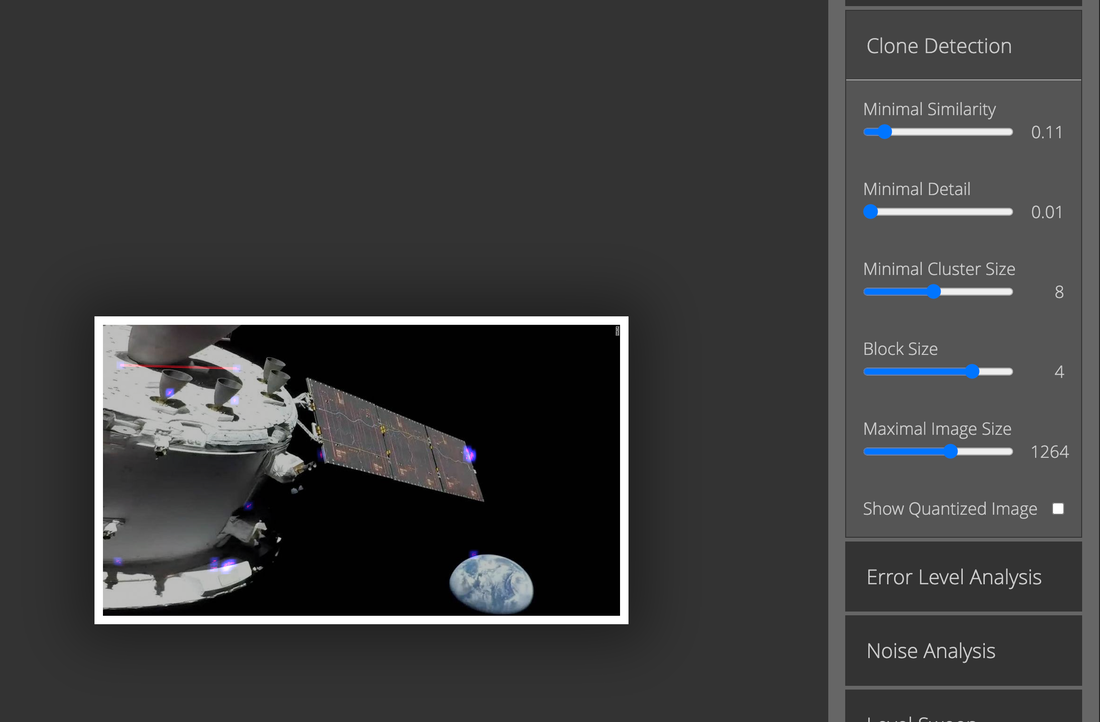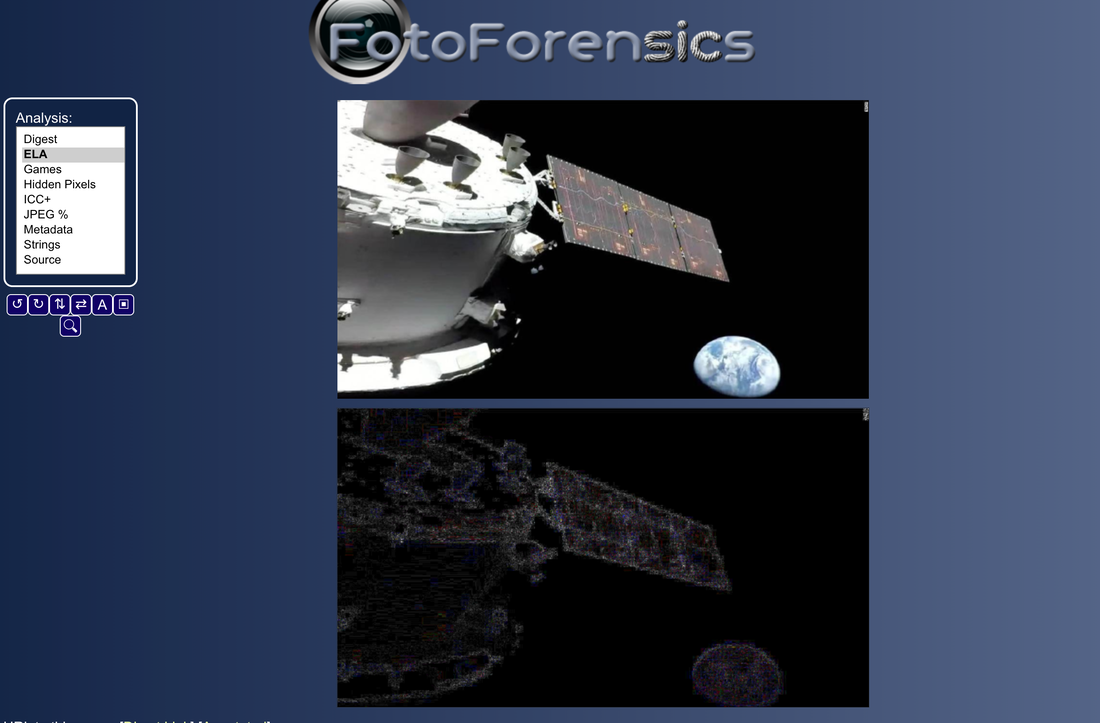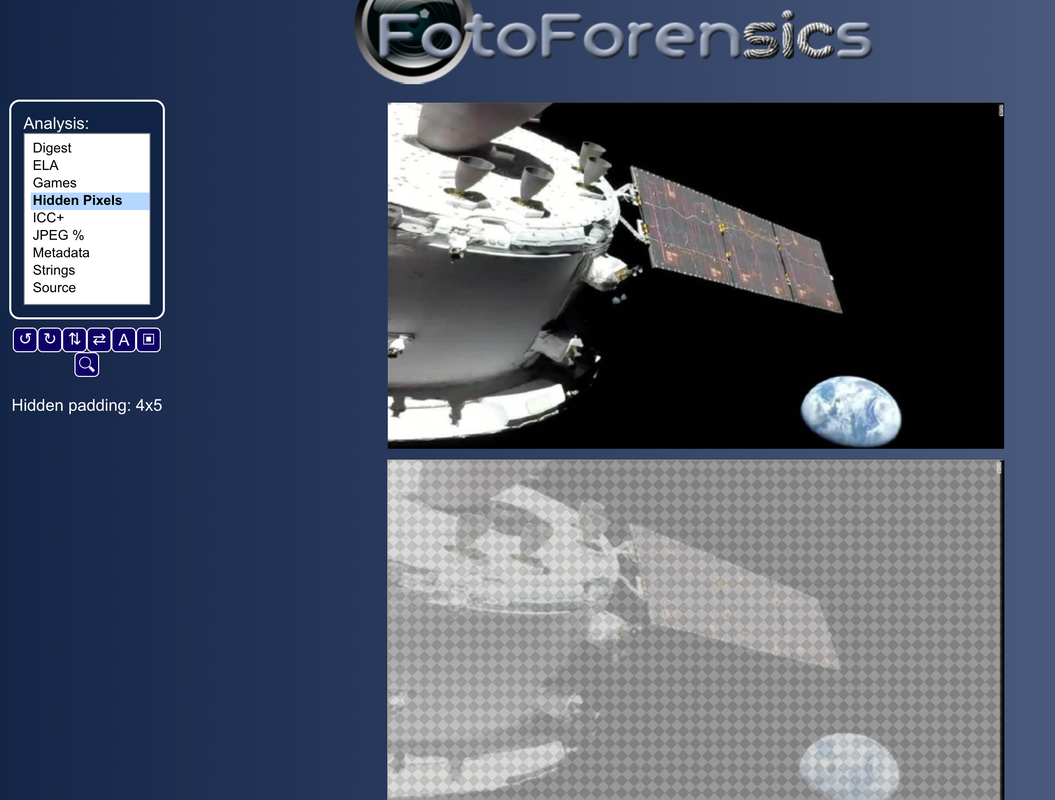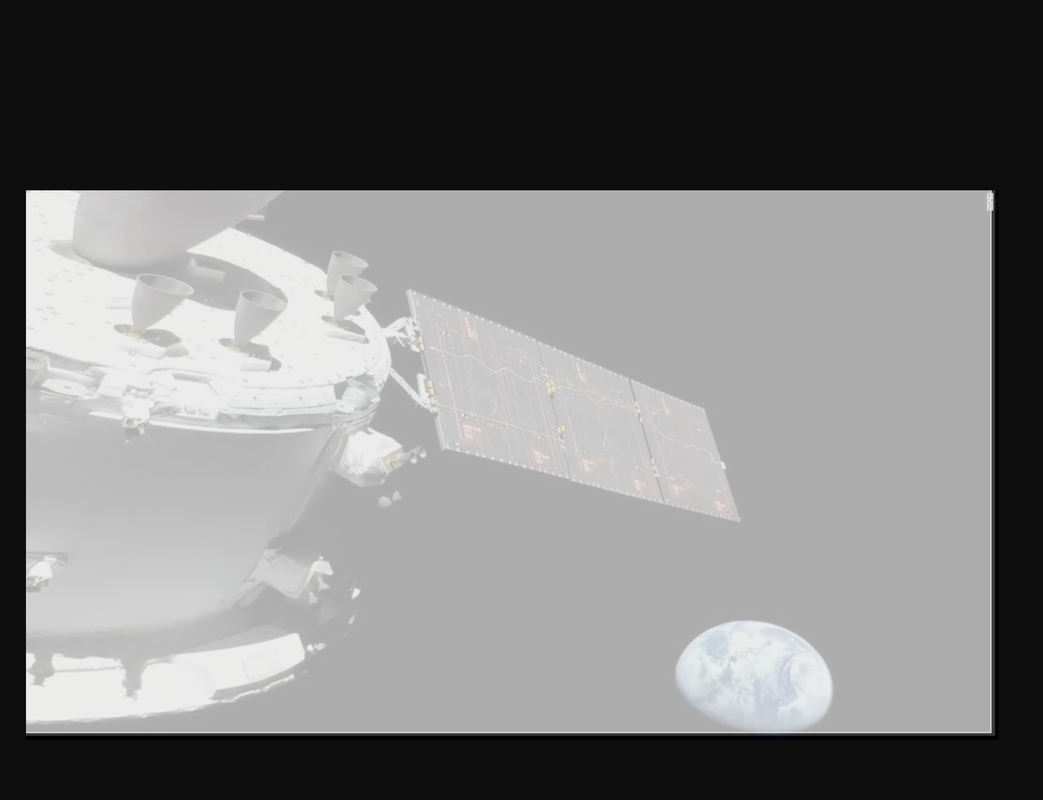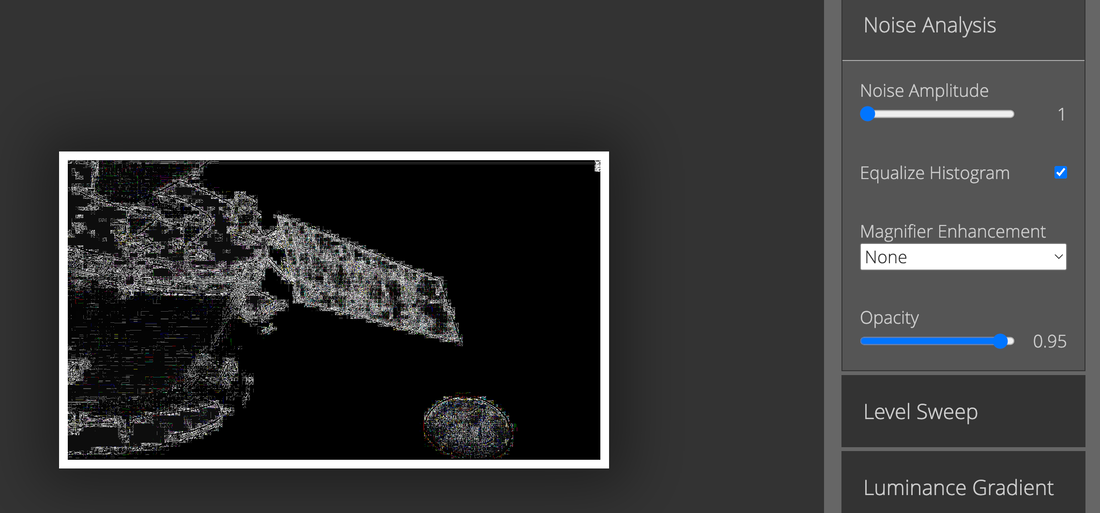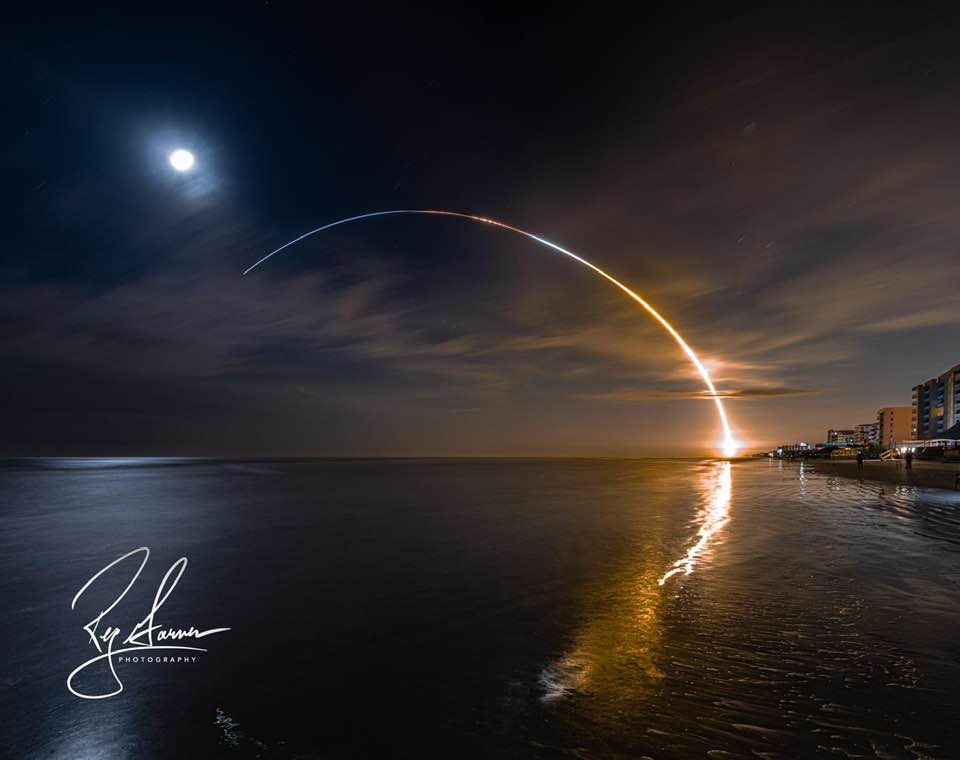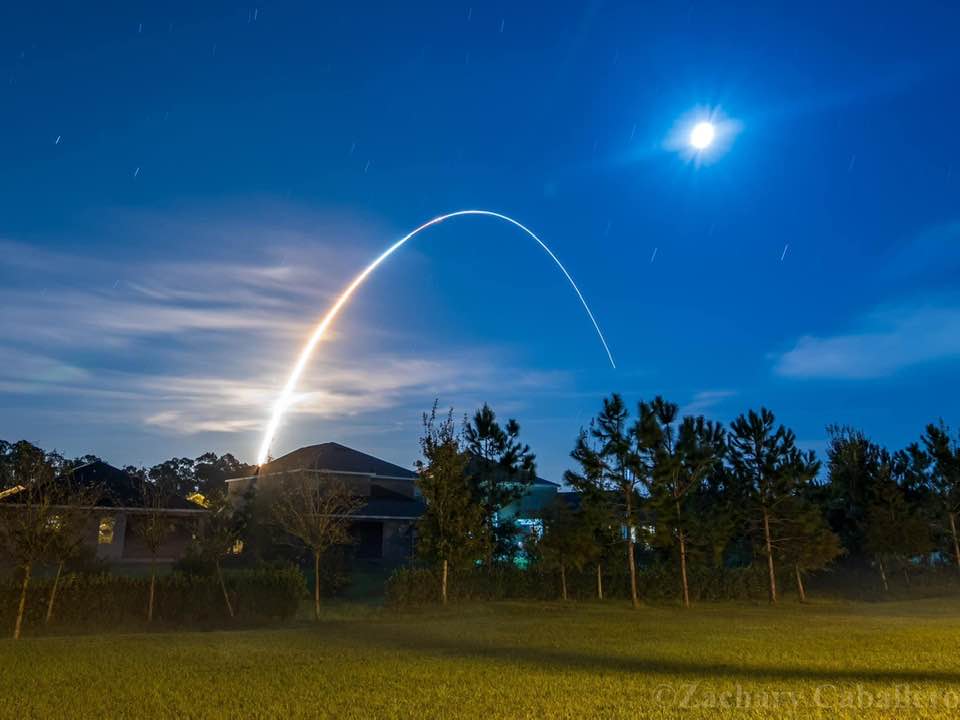Ask Jeran to provide forensic analysis from an expert on videography/photography to support the claim he made that the video is fake due to "layers disappearing". All he has are assertions with no evidence to support his assertions. Hitchen's Razor: claims made without evidence can be dismissed without evidence.
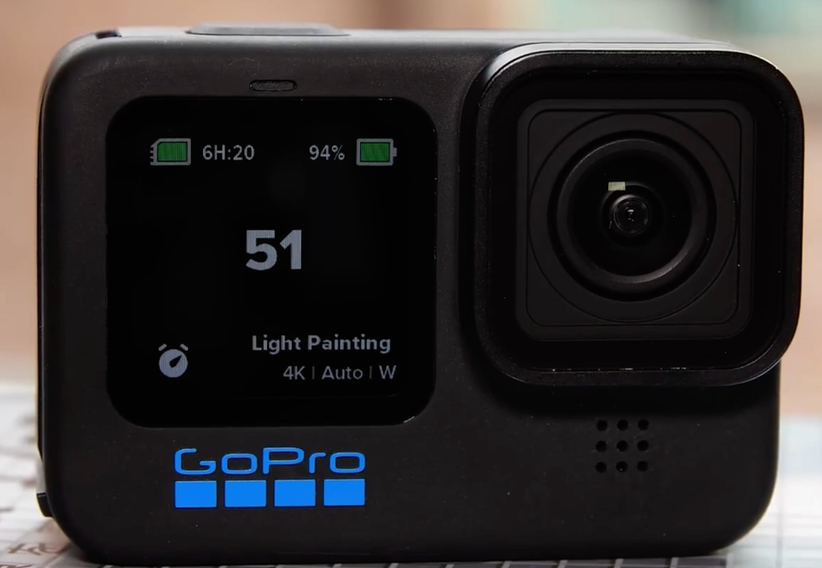
There were 13 cameras installed across Orion, inside, outside and on the spacecrafts solar arrays. NASA Opted for the Go Pro Hero black for this mission, but with a LOT of adjustments.
This is important:
The images are sharing bandwidth with other really important communications and telemetry data that is coming down from Artemis, so there is a lot to squeeze through this downlink.
Due to this restricted bandwidth, mission-critical data will be prioritized and some high-quality views may not be available until long after they're captured. Further, each camera has been optimized to capture imagery of the spacecraft, rather than deep space. NASA points out that 'imagery for the Artemis I flight will depend on a variety of factors such as lighting, spacecraft orientation, and communication capabilities during different mission phases.
This is important:
The images are sharing bandwidth with other really important communications and telemetry data that is coming down from Artemis, so there is a lot to squeeze through this downlink.
Due to this restricted bandwidth, mission-critical data will be prioritized and some high-quality views may not be available until long after they're captured. Further, each camera has been optimized to capture imagery of the spacecraft, rather than deep space. NASA points out that 'imagery for the Artemis I flight will depend on a variety of factors such as lighting, spacecraft orientation, and communication capabilities during different mission phases.
In the MP4 at 1:08 to 1:10 is an interesting sequence of exposure changes.
Exposure depends on 3 things
1. ISO setting (amplification of sensor signal)
2. shutter speed (time the sensor collects light)
3. aperture (is fixed on standard GoPros)
1. ISO setting (amplification of sensor signal)
ISO is the measurement of light sensitivity. Setting your camera's ISO level is necessary to achieve the right light level to your taste. The lower the ISO the less sensitive it is to light, the darker the photo. A higher ISO increases the light sensitivity. With lower sensitivity you can get photos with less light but they will be grainier or noisier.
2. shutter speed (time the sensor collects light)
Shutter Speed- Door Opens and closes. Speed door opens and closes.
Total time the camera's sensor is exposed to light.
Shutter speed, also known as exposure time, is the speed at which the camera’s door opens and closes. This is the total time that light is exposed to the camera’s sensor. This can be measured in fractions of seconds or multiple seconds or minutes. A fast shutter speed is good for capturing action without motion blur. A longer shutter speed can help to create a motion blur effect. To get a clear shot of bird flapping its wings you might have to go to 1/1000th but for night time landscapes it could be as long as 15 seconds.
3. aperture (is fixed on standard GoPros)
Aperture - hole in lens where light comes
Pupils are to our eyes.
Affects how much light coming in.
Lower number , larger aperature.
How do you get the background blur effect with your DSLR camera? You adjust the aperture to a low f-stop. This is also known as a shallow depth of field effect. Aperture is like the camera’s pupil. The more open it is the more light is let in. Consequently this controls how in-focus the background looks compared to the foreground. A lower f-stop like f2.8 will give you a shallow depth of field or a blurry background and in-focus foreground or subject. A higher f-stop like f8 will bring the entire frame into focus
1. ISO setting (amplification of sensor signal)
2. shutter speed (time the sensor collects light)
3. aperture (is fixed on standard GoPros)
1. ISO setting (amplification of sensor signal)
ISO is the measurement of light sensitivity. Setting your camera's ISO level is necessary to achieve the right light level to your taste. The lower the ISO the less sensitive it is to light, the darker the photo. A higher ISO increases the light sensitivity. With lower sensitivity you can get photos with less light but they will be grainier or noisier.
2. shutter speed (time the sensor collects light)
Shutter Speed- Door Opens and closes. Speed door opens and closes.
Total time the camera's sensor is exposed to light.
Shutter speed, also known as exposure time, is the speed at which the camera’s door opens and closes. This is the total time that light is exposed to the camera’s sensor. This can be measured in fractions of seconds or multiple seconds or minutes. A fast shutter speed is good for capturing action without motion blur. A longer shutter speed can help to create a motion blur effect. To get a clear shot of bird flapping its wings you might have to go to 1/1000th but for night time landscapes it could be as long as 15 seconds.
3. aperture (is fixed on standard GoPros)
Aperture - hole in lens where light comes
Pupils are to our eyes.
Affects how much light coming in.
Lower number , larger aperature.
How do you get the background blur effect with your DSLR camera? You adjust the aperture to a low f-stop. This is also known as a shallow depth of field effect. Aperture is like the camera’s pupil. The more open it is the more light is let in. Consequently this controls how in-focus the background looks compared to the foreground. A lower f-stop like f2.8 will give you a shallow depth of field or a blurry background and in-focus foreground or subject. A higher f-stop like f8 will bring the entire frame into focus
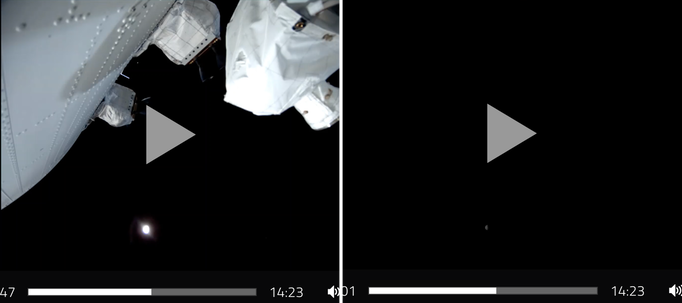
Shutter speed and ISO can be adjusted instantly from one frame to another - theoretically. I don’t know how the camera was operated and how fast it adapts automatically. If it was controlled from the earth and they wanted to expose the moon correctly, then they would probably switch to the lowest ISO and fastest shutter speed first and then slowly adjust until it was the right exposure.
If the Orion part was in shadow, which it obviously was, the sun lit part of the moon is to the left, then the shadow part would instantly go black.
If the Orion part was in shadow, which it obviously was, the sun lit part of the moon is to the left, then the shadow part would instantly go black.
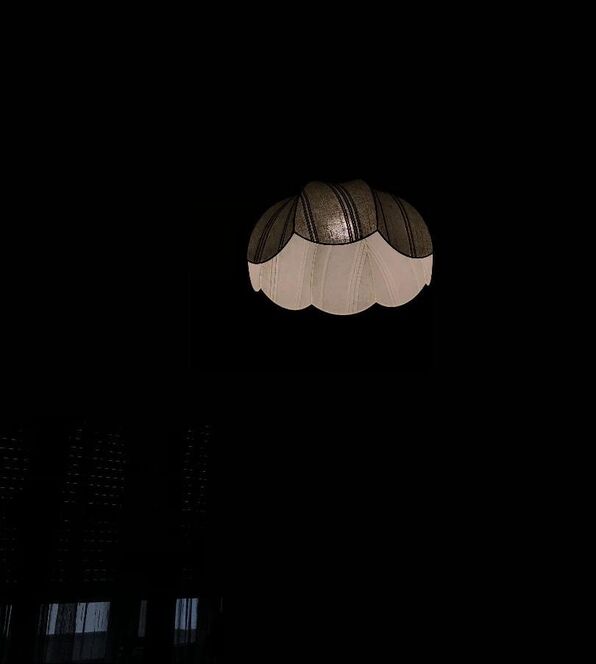
The ISO and shutter speed range are huge. It is easily possible to choose values that the image goes totally black at night, except for some very bright lights in the scene. As Walter's image here shows, it does not even need be very dark.
Additionally we know that the live stream had a limited bandwidth and the frame rate was often about 1 s or so, with lots of frame losses (the same image was shown for multiple seconds). So even if the camera settings were not instantaneously, the intermittent frames could have been lost easily.
Here is an image Walter took with his iPhone, turned the exposure manually down as much I could. The room he was sitting in was illuminated by this lamp and the outside light quite bright. But as you can see the walls and the ceiling are completely black (open it on your image manipulation software of choice). This demonstrates that the image of Orion can be easily completely black except for the bright moon.
It is so easy to demonstrate how wrong Jeran is.
Walter
Additionally we know that the live stream had a limited bandwidth and the frame rate was often about 1 s or so, with lots of frame losses (the same image was shown for multiple seconds). So even if the camera settings were not instantaneously, the intermittent frames could have been lost easily.
Here is an image Walter took with his iPhone, turned the exposure manually down as much I could. The room he was sitting in was illuminated by this lamp and the outside light quite bright. But as you can see the walls and the ceiling are completely black (open it on your image manipulation software of choice). This demonstrates that the image of Orion can be easily completely black except for the bright moon.
It is so easy to demonstrate how wrong Jeran is.
Walter
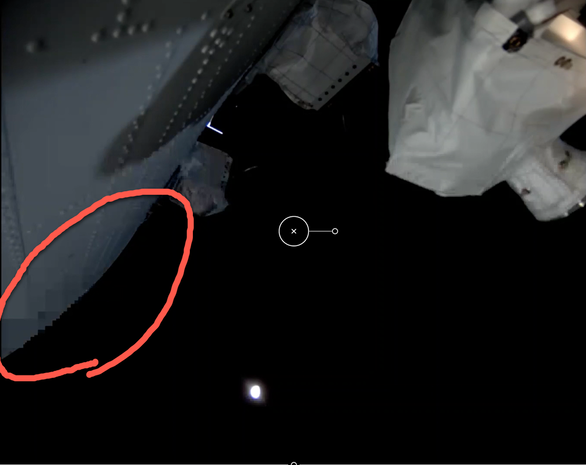
@sthurston2 Also gave a lot of great feedback
At 06 :05 in the MP4 there is a glitch in the frame showing as a very blocky patch in the lower left corner. That blocky patch persists for 5 frames. Thus while the MP4 is presented at 30 frames per second the content is actually just 6 frames per second. 1/6th of a second is no problem at all for even a mechanical exposure shift. For example the Sony A1 offers 10 fps burst mode using a mechanical shutter and 30 fps burst mode using an electronic shutter.
I checked a few events in the MP4. The number of frames the view was frozen for varied. I got frame counts as low as 4 and as high as 8 or possibly more. That suggests to me the frames were sent as and when priorities allow and the MP4 has been constructed using the frame timestamps.
[go through frame by frame]
I do not see any issue with a 1 frame jump in exposure setting.
At 06 :05 in the MP4 there is a glitch in the frame showing as a very blocky patch in the lower left corner. That blocky patch persists for 5 frames. Thus while the MP4 is presented at 30 frames per second the content is actually just 6 frames per second. 1/6th of a second is no problem at all for even a mechanical exposure shift. For example the Sony A1 offers 10 fps burst mode using a mechanical shutter and 30 fps burst mode using an electronic shutter.
I checked a few events in the MP4. The number of frames the view was frozen for varied. I got frame counts as low as 4 and as high as 8 or possibly more. That suggests to me the frames were sent as and when priorities allow and the MP4 has been constructed using the frame timestamps.
[go through frame by frame]
I do not see any issue with a 1 frame jump in exposure setting.
THIS is why a lot of the live video has been reasonably low resolution.
NASA gets 24 billion a year .5% of total budget. 65 Million a day.
NASA gets 24 billion a year .5% of total budget. 65 Million a day.
Best Source of Image
https://images-assets.nasa.gov/image/art001e000095%20FD1%20Earth1/art001e000095%20FD1%20Earth1~orig.jpg
https://images-assets.nasa.gov/image/art001e000095%20FD1%20Earth1/art001e000095%20FD1%20Earth1~orig.jpg
1. Good Photo Forensics Tutorial Video:
https://www.youtube.com/watch?v=G1Y0UTMTF7o
2. Forensically Photo Forensics Software (My favorite)
https://29a.ch/photo-forensics
3. Foto Forensics Photo Forensics Software (Also good)
https://fotoforensics.com
https://www.youtube.com/watch?v=G1Y0UTMTF7o
2. Forensically Photo Forensics Software (My favorite)
https://29a.ch/photo-forensics
3. Foto Forensics Photo Forensics Software (Also good)
https://fotoforensics.com
Best Resolution Image I Could Find
Comparing Blue Marble 2022 to GOES-16/GOES East (Photo take 9-1/2 hours after launch around 11:17 AM EST November 16th.
Link for image I used below:
https://cdn.star.nesdis.noaa.gov/GOES16/ABI/FD/GEOCOLOR/20223201610_GOES16-ABI-FD-GEOCOLOR-5424x5424.jpg
Link for image I used below:
https://cdn.star.nesdis.noaa.gov/GOES16/ABI/FD/GEOCOLOR/20223201610_GOES16-ABI-FD-GEOCOLOR-5424x5424.jpg

Why does nasa say they lost/dont have the tech to go to the moon again even if they mean manned mission to the moon that doesnt make much sense.
Don Pettit used the word ‘technology’ to refer to meaning #2, not #1. NASA no longer has the rockets, factory, equipment, etc. from the original Apollo missions because they are no longer necessary. But we still have all the necessary knowledge & know how to go to the Moon. In fact, many of the current space exploration missions have various similarities to the original Apollo missions.
Don Pettit used the word ‘technology’ to refer to meaning #2, not #1. NASA no longer has the rockets, factory, equipment, etc. from the original Apollo missions because they are no longer necessary. But we still have all the necessary knowledge & know how to go to the Moon. In fact, many of the current space exploration missions have various similarities to the original Apollo missions.
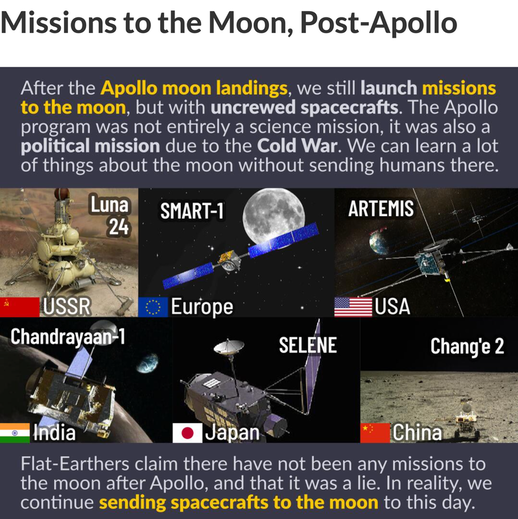
Flat-Earthers claim that there have not been any missions to the moon after the Apollo missions, and they conclude that the Apollo missions were fabricated. In reality, we continue sending spacecraft to the moon to this day.
The Apollo program was not exclusively a science mission, but also a political one. The United States was involved in a cold war with the Soviet Union. Both countries were in competition in every way to gain influence on other countries. The Space Race happened, and the USSR had beaten the US by launching the first satellite and sending the first human into space. The Apollo program was created in response to these setbacks.
The Apollo program was not exclusively a science mission, but also a political one. The United States was involved in a cold war with the Soviet Union. Both countries were in competition in every way to gain influence on other countries. The Space Race happened, and the USSR had beaten the US by launching the first satellite and sending the first human into space. The Apollo program was created in response to these setbacks.
5.75 million pounds
9 million points of thrust
322 feet tall.
Most powerful rocket ever built by NASA
Launched 1:47 am this morning November 16th
First Human Rated Spacecraft capturing Images of earth since 1972
57,000 miles up
9.5 hours in
9 million points of thrust
322 feet tall.
Most powerful rocket ever built by NASA
Launched 1:47 am this morning November 16th
First Human Rated Spacecraft capturing Images of earth since 1972
57,000 miles up
9.5 hours in
https://www.youtube.com/watch?v=G1Y0UTMTF7o
1. Magnification (A little weird stuff but consistent, low resolution).
2. Clone Detection (None)
2. Clone Detection (None)
3. Error Level Analysis - Nothing Detected
4. Hidden Pixels - FotoForensics - None
5. Noise Level Analysis - Nothing Detected

